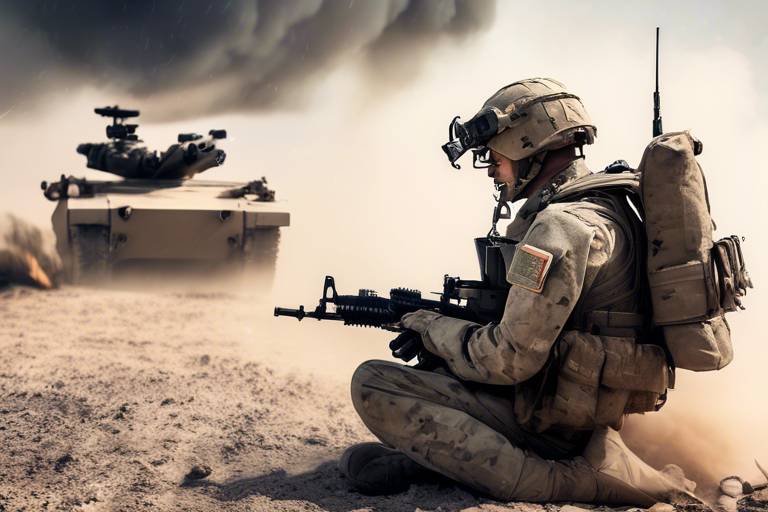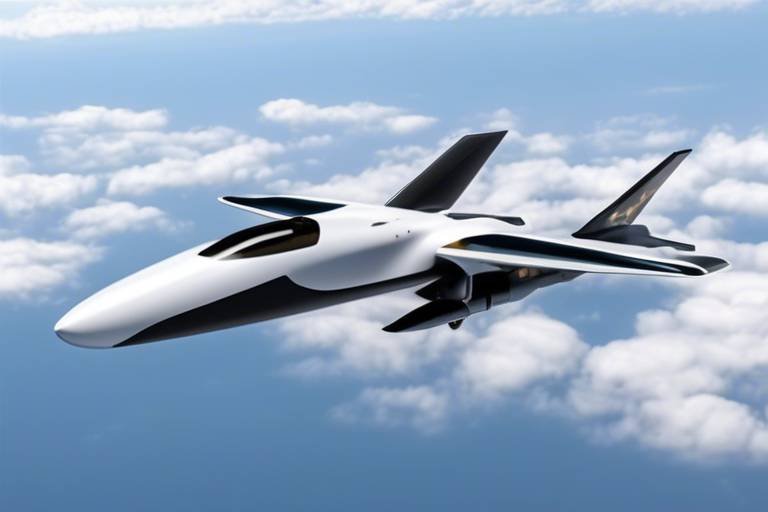The Role of AI in Enhancing Battlefield Communication
In today's fast-paced and unpredictable combat environments, artificial intelligence (AI) is emerging as a game-changer for military communication strategies. Imagine being able to share vital information across vast distances in real time, ensuring that every soldier, commander, and support unit is on the same page. This is not just a dream; it's becoming a reality. AI is transforming how military units interact, making communication not only faster but also more secure and efficient. The impact of this technology is profound, as it enables military forces to adapt quickly to changing situations and enhances their overall effectiveness on the battlefield.
AI-powered communication systems are at the forefront of this revolution. These systems facilitate seamless information sharing, allowing for swift command processes. Picture a scenario where a commander can instantly relay critical updates to troops in the field, ensuring that everyone is informed and ready to act. This rapid dissemination of information is crucial in high-stakes situations where every second counts. By utilizing AI, military leaders can ensure that the right data reaches the right personnel without delay, which is essential for maintaining operational integrity and safety.
Furthermore, the ability of AI to analyze vast amounts of data is another significant advantage. Military leaders are often faced with overwhelming information from various sources. AI can sift through this data, identifying patterns and insights that inform strategic decisions. This capability enhances situational awareness, allowing for better operational planning in complex environments. Imagine having a tool that not only presents data but also interprets it, providing actionable insights that can make the difference between success and failure in a mission.
One of the most exciting applications of AI in military communication is through predictive analytics. This technology can forecast potential threats and outcomes, giving military strategists the foresight needed to prepare for various scenarios. Consider it like having a crystal ball that helps predict the future of battlefield dynamics. This foresight is crucial for maintaining an advantage over adversaries, especially in the unpredictable nature of modern warfare.
Moreover, AI enhances operational efficiency by automating routine tasks and optimizing resource allocation. This means that military personnel can focus on what truly matters—critical decision-making and mission execution. Imagine a world where soldiers are relieved from mundane tasks, allowing them to concentrate on their training and strategies. This shift not only boosts morale but also enhances the effectiveness of military operations as a whole.
In addition to improving communication within units, AI also plays a vital role in enhancing interoperability among allied forces. By standardizing communication protocols, AI ensures that information can be exchanged seamlessly across different military branches and nations. This collaboration is essential for coordinated operations, especially in multinational military engagements where effective communication can spell the difference between victory and defeat.
As we look to the future, the integration of AI in military communication is set to become even more sophisticated. With ongoing advancements in technology, we can expect to see even more innovative applications that will further enhance battlefield communication. However, this progress does not come without its challenges and ethical considerations. Issues such as data privacy, accountability, and the potential for misuse must be addressed to ensure that AI is used responsibly and effectively in military operations.
- What is AI-powered communication in the military? AI-powered communication refers to the use of artificial intelligence technologies to enhance the speed, security, and efficiency of information sharing among military units.
- How does AI improve decision-making on the battlefield? AI improves decision-making by analyzing large datasets quickly, providing actionable insights, and enabling predictive analytics for threat assessment.
- What are the ethical concerns regarding AI in military communication? Ethical concerns include data privacy, accountability for decisions made by AI systems, and the potential for misuse of AI technologies in warfare.

AI-Powered Communication Systems
In the rapidly evolving landscape of military operations, are emerging as game-changers. Imagine a world where information flows seamlessly, where commanders can make decisions in real time, and where every soldier is connected through a web of advanced technology. These systems are not just enhancing communication; they are redefining it. Through sophisticated algorithms and machine learning, AI is enabling military units to share critical information instantaneously, ensuring that the right personnel receive the right data at the right time.
One of the most significant advantages of these AI-driven systems is their ability to streamline command processes. Traditional communication methods often suffer from delays and misinterpretations, which can have dire consequences on the battlefield. However, with AI, data is processed and disseminated with remarkable speed and accuracy. For instance, AI can analyze incoming intelligence reports and prioritize them based on urgency, allowing commanders to focus on what matters most. This swift processing capability not only enhances operational efficiency but also boosts the overall effectiveness of military strategies.
Moreover, AI-powered systems facilitate real-time collaboration among different military branches and allied forces. In a world where coordination can mean the difference between victory and defeat, having a unified communication platform is essential. AI helps standardize communication protocols, ensuring that all units, regardless of their technological background, can share information without barriers. This interoperability is crucial, especially in multinational operations where forces from various countries must work together seamlessly.
To illustrate the impact of AI on military communication, consider the following table showcasing key features of AI-powered communication systems:
| Feature | Description |
|---|---|
| Real-Time Data Sharing | Instantaneous dissemination of information across units. |
| Intelligent Prioritization | AI analyzes data to highlight urgent communications. |
| Interoperability | Standardized protocols for seamless communication between forces. |
| Enhanced Security | AI-driven encryption methods protect sensitive information. |
As we delve deeper into the implications of AI in military communication, it's important to recognize that while these systems offer remarkable benefits, they also present challenges. For instance, the reliance on technology can lead to vulnerabilities, such as cyber threats that target communication networks. Therefore, while embracing these innovations, military leaders must also prioritize cybersecurity measures to safeguard their operations.
In conclusion, AI-powered communication systems are not merely tools; they are vital components of modern military strategy. By enhancing real-time information sharing and streamlining command processes, they empower military forces to operate more effectively in complex environments. As technology continues to advance, the role of AI in battlefield communication will only grow, shaping the future of military operations.
- What are AI-powered communication systems?
These are advanced systems that utilize artificial intelligence to enhance communication and information sharing among military units. - How do AI systems improve decision-making?
AI systems analyze vast amounts of data quickly, allowing military leaders to make informed decisions based on real-time information. - Are there risks associated with AI in military communication?
Yes, while AI offers many advantages, it also introduces vulnerabilities, such as cyber threats that could compromise communication networks. - How does AI enhance interoperability among allied forces?
AI standardizes communication protocols, ensuring that different military branches and allied forces can share information seamlessly.
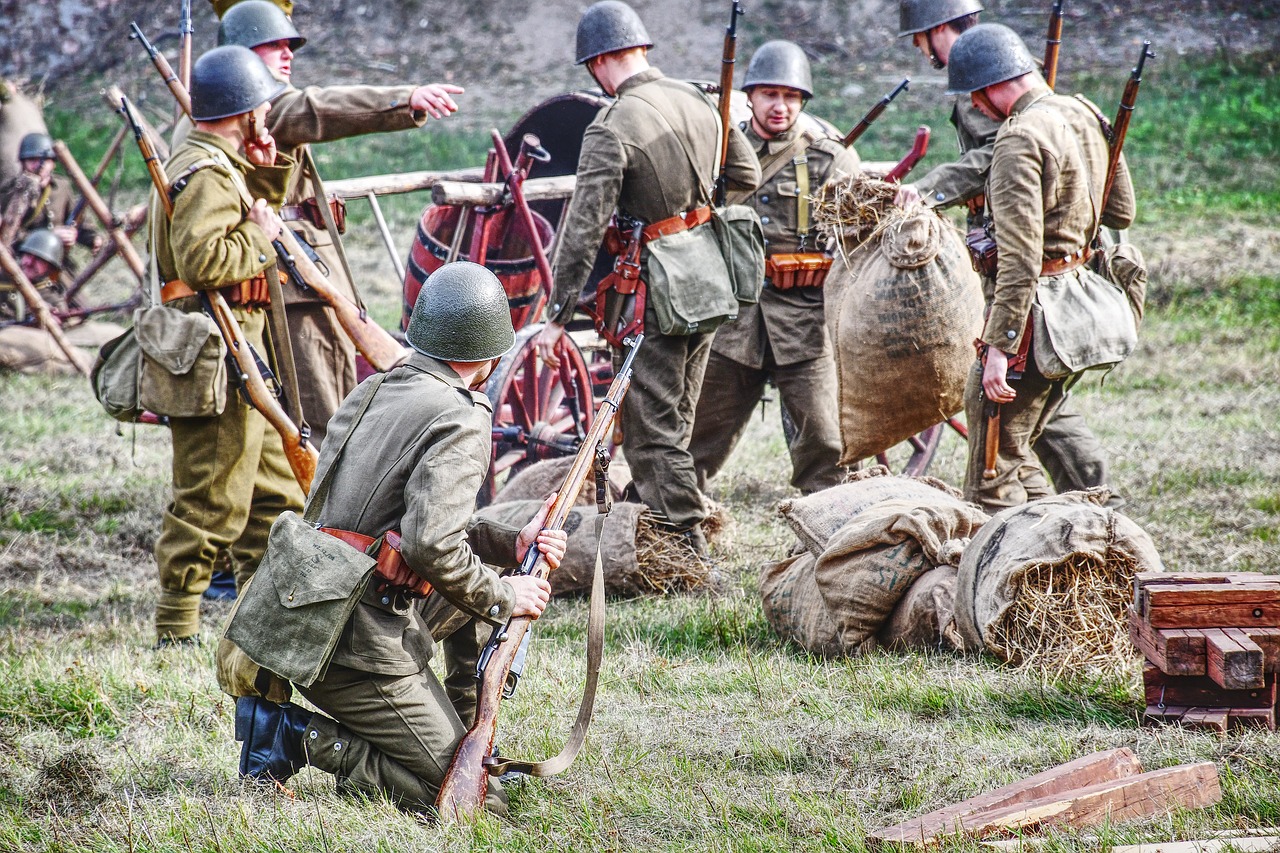
Data Analysis for Strategic Decisions
In the high-stakes world of military operations, the ability to analyze data swiftly and accurately can mean the difference between victory and defeat. Artificial Intelligence (AI) plays a pivotal role in this realm, enabling military leaders to sift through mountains of data at lightning speed. Imagine trying to find a needle in a haystack, but with AI, that haystack is sorted, categorized, and highlighted for you. This capability transforms the decision-making process, enhancing situational awareness and operational planning.
With AI, military strategists can access real-time data from various sources, including satellite imagery, reconnaissance reports, and even social media feeds. This integration allows for a comprehensive view of the battlefield, which is crucial for making informed choices. For instance, AI algorithms can analyze patterns in enemy movements or predict supply chain disruptions, offering insights that would take human analysts days, if not weeks, to uncover. As a result, commanders can react more swiftly to changing circumstances, ensuring that their forces are always one step ahead.
Moreover, the use of predictive analytics is a game-changer in warfare. By analyzing historical data, AI can forecast potential threats and outcomes, allowing military leaders to prepare for various scenarios. This foresight is akin to having a crystal ball that reveals not just the immediate future but also the likely consequences of different strategic choices. For example, if data indicates an increased likelihood of enemy aggression in a particular region, commanders can preemptively reposition troops or resources, thereby maintaining an advantage over adversaries.
To further illustrate the impact of AI on data analysis for strategic decisions, consider the following table that highlights key benefits:
| Benefit | Description |
|---|---|
| Speed | AI can process vast amounts of data in seconds, providing timely insights for decision-making. |
| Accuracy | Machine learning algorithms reduce human error, ensuring more reliable data interpretation. |
| Predictive Power | AI's ability to forecast outcomes helps in planning and preparing for potential threats. |
| Resource Optimization | AI identifies the most efficient use of resources, improving overall operational effectiveness. |
However, it’s important to note that the integration of AI in data analysis is not without its challenges. Questions regarding the reliability of AI-generated insights and the potential for biases in algorithms must be addressed. Military leaders must ensure that they do not solely rely on AI but rather use it as a supportive tool that complements human judgment. After all, while AI can crunch numbers and analyze patterns, it lacks the intuition and experience that seasoned military personnel bring to the table.
- How does AI improve decision-making in military operations? AI enhances decision-making by providing real-time data analysis, predictive insights, and reducing human error.
- What are the risks associated with AI in military strategy? Risks include reliance on potentially biased algorithms, data privacy concerns, and the need for human oversight.
- Can AI predict future military actions? Yes, AI can analyze historical data to forecast potential threats and outcomes, aiding in strategic planning.
- Is AI a replacement for human decision-making in the military? No, AI is intended to support and enhance human decision-making, not replace it.

Predictive Analytics in Warfare
Predictive analytics in warfare is like having a crystal ball that can see into the future of military operations. Imagine being able to forecast potential threats and outcomes with a high degree of accuracy. This capability is not just a luxury; it is a necessity in the ever-evolving landscape of combat. By leveraging advanced algorithms and vast datasets, military strategists can anticipate enemy movements, assess risks, and make informed decisions that could mean the difference between victory and defeat.
One of the most exciting aspects of predictive analytics is its ability to analyze historical data and identify patterns. For instance, by examining previous conflicts and engagements, AI systems can highlight trends that may indicate how an adversary is likely to act under certain conditions. This foresight allows military leaders to prepare for various scenarios, ensuring they remain one step ahead of their opponents. It's akin to playing chess—knowing your opponent's potential moves can give you a strategic advantage.
Moreover, predictive analytics can enhance situational awareness on the battlefield. By integrating real-time data from various sources, such as drones, satellites, and ground sensors, AI systems can provide a comprehensive view of the operational environment. This holistic perspective enables commanders to make quick, informed decisions, especially in dynamic and high-stakes situations. They can assess the likelihood of an enemy attack, identify vulnerable points, and allocate resources more effectively.
However, it's essential to recognize that predictive analytics isn't foolproof. While it can significantly improve decision-making, it also relies heavily on the quality of the data being analyzed. Inaccurate or biased data can lead to flawed predictions, which could have dire consequences in the field. Therefore, military organizations must ensure robust data collection and validation processes to maximize the effectiveness of these predictive tools.
In conclusion, predictive analytics in warfare represents a transformative leap forward in military strategy. By harnessing the power of AI to forecast potential threats and outcomes, military leaders can enhance their operational readiness and maintain a decisive edge over adversaries. As technology continues to evolve, the integration of predictive analytics will undoubtedly become a cornerstone of modern warfare, shaping the future of military operations.
- What is predictive analytics in warfare?
Predictive analytics in warfare refers to the use of advanced algorithms and data analysis techniques to forecast potential threats and outcomes in military operations. - How does predictive analytics improve decision-making?
By analyzing historical data and real-time information, predictive analytics helps military leaders anticipate enemy actions and make informed strategic decisions. - What are the limitations of predictive analytics?
The effectiveness of predictive analytics depends on the quality of the data used. Inaccurate or biased data can lead to flawed predictions. - How is AI integrated into predictive analytics?
AI algorithms process vast amounts of data to identify patterns and trends, enabling military strategists to forecast various scenarios and enhance situational awareness.
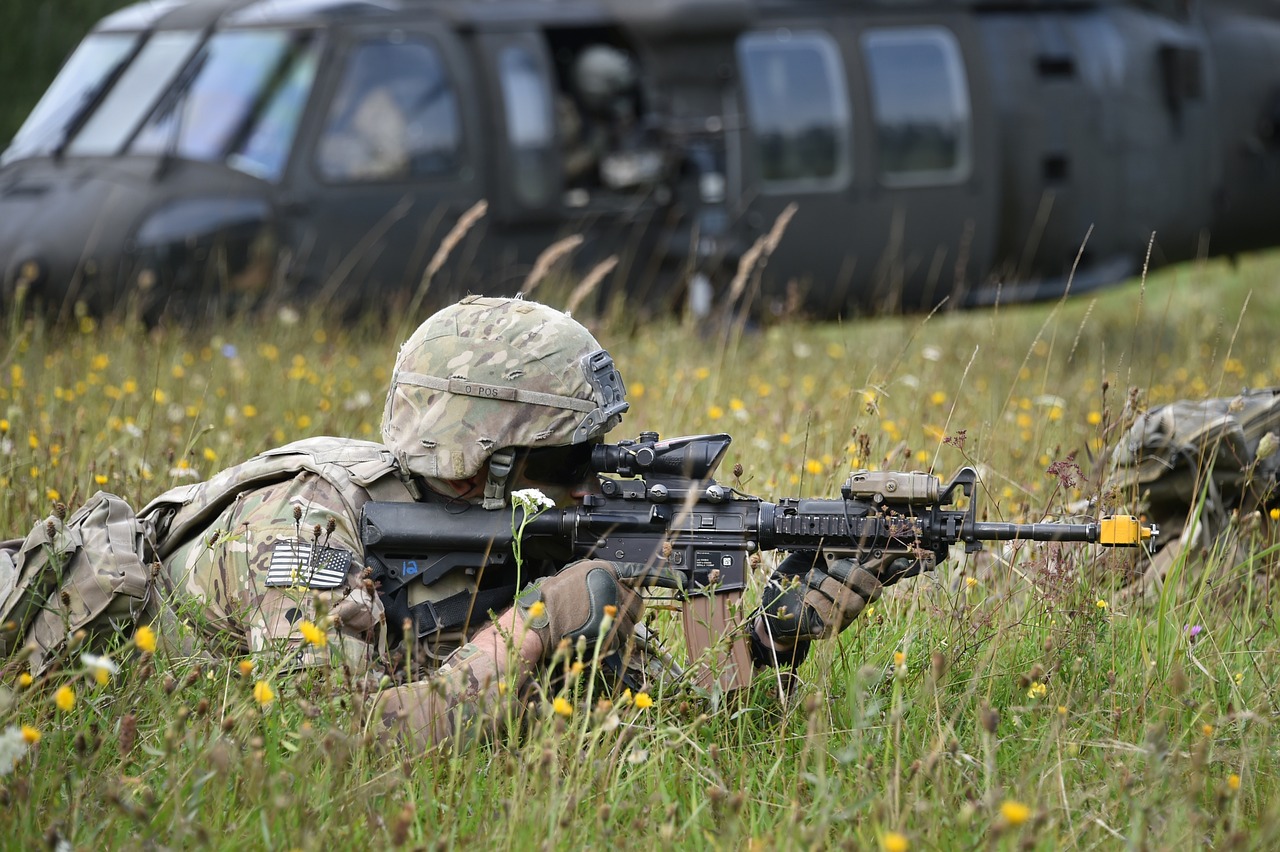
Real-time Threat Assessment
In the chaotic environment of the battlefield, the ability to assess threats in real-time is nothing short of a game-changer. Imagine being able to instantly analyze incoming data from various sources—drones, satellites, and ground troops—all while making crucial decisions that could impact the lives of many. This is where artificial intelligence steps in, acting as a powerful ally for military forces around the globe. By utilizing AI algorithms, military units can swiftly identify and evaluate potential threats, allowing them to respond with precision and agility.
AI systems are designed to process vast amounts of information at lightning speed. For instance, they can analyze patterns from previous engagements, monitor social media for signs of unrest, and even interpret data from reconnaissance missions. This comprehensive data analysis leads to a clearer picture of the battlefield, enabling commanders to make informed decisions based on real-time intelligence. The integration of AI in threat assessment not only enhances situational awareness but also significantly reduces the time it takes to react to emerging dangers.
Moreover, the predictive capabilities of AI can be a decisive factor in modern warfare. By employing machine learning techniques, these systems can identify trends and forecast potential threats before they escalate. This proactive approach allows military planners to prepare for various scenarios, ensuring that forces are not just reactive but also strategically ahead of their adversaries. For example, if an AI system detects unusual troop movements or communications, it can alert commanders to possible ambushes or surprise attacks, enabling preemptive measures.
To illustrate this, consider a scenario where an AI-driven system analyzes data from multiple sensors and quickly identifies a sudden spike in enemy activity. The system can categorize this information based on threat levels, providing actionable insights that can be communicated to troops in the field. This capability is crucial in high-stakes situations where every second counts, and the margin for error is razor-thin.
However, while the advantages are evident, it's essential to acknowledge the challenges that come with implementing AI in real-time threat assessment. Issues such as data privacy, algorithmic bias, and the potential for over-reliance on technology must be addressed. Military leaders must strike a balance between leveraging AI's capabilities and maintaining human oversight to ensure ethical and effective decision-making on the battlefield.
In conclusion, real-time threat assessment powered by AI is revolutionizing military operations. By enhancing situational awareness, improving decision-making speed, and providing predictive insights, AI is not just a technological advancement; it is a vital component of modern warfare strategy. As we continue to explore the potential of AI in military applications, one thing is clear: the future of battlefield communication will be shaped significantly by these intelligent systems.
- What is real-time threat assessment in military operations?
Real-time threat assessment refers to the ability to evaluate and respond to potential dangers on the battlefield instantly. It involves analyzing data from various sources to make informed decisions quickly. - How does AI improve threat assessment?
AI improves threat assessment by processing vast amounts of data rapidly, identifying patterns, and providing predictive insights that help military leaders make strategic decisions. - What are the challenges of using AI in military communication?
Challenges include data privacy concerns, algorithmic bias, and the risk of over-reliance on technology, which necessitates careful consideration and regulation. - Can AI replace human decision-making in the military?
While AI can enhance decision-making, it is crucial to maintain human oversight to ensure ethical and effective outcomes in military operations.

Operational Efficiency Improvements
In today's fast-paced military environment, operational efficiency is not just a buzzword; it's a necessity. With the integration of artificial intelligence (AI) into battlefield communication, military operations are witnessing a significant transformation. Imagine a world where routine tasks are automated, allowing personnel to focus on what truly matters: mission execution and strategic decision-making. That’s the reality AI is creating for modern armed forces.
One of the most notable improvements AI brings to operational efficiency is the automation of routine tasks. By leveraging AI algorithms, military units can streamline processes that traditionally consumed valuable time and resources. For instance, administrative duties such as report generation, data entry, and even logistical planning can be handled by AI systems. This not only reduces the workload on human operators but also minimizes the risk of human error, which can be critical in high-stakes environments.
Additionally, AI enhances resource allocation. Military operations often involve complex logistics, where every second counts. AI can analyze various factors—such as troop movements, supply levels, and environmental conditions—to optimize the distribution of resources. This ensures that the right supplies and personnel are in the right place at the right time, thereby increasing overall operational effectiveness. For example, during a mission, AI can predict which units will require additional support based on real-time data, allowing commanders to make informed decisions swiftly.
Moreover, AI's ability to process and analyze vast amounts of data in real-time means that military leaders can access critical information faster than ever before. This capability is particularly vital in dynamic combat situations where conditions can change rapidly. With AI, commanders can receive instant updates on enemy positions, troop movements, and environmental factors, enabling them to adapt their strategies on the fly. It's like having a tactical advisor that never sleeps, continuously sifting through data to provide actionable insights.
To illustrate the impact of AI on operational efficiency, consider the following table that summarizes key areas of improvement:
| Area of Improvement | Description | Impact |
|---|---|---|
| Automation of Routine Tasks | Streamlining administrative and logistical processes. | Reduces workload and minimizes human error. |
| Resource Allocation | Optimizing the distribution of troops and supplies. | Ensures timely support and enhances mission effectiveness. |
| Real-Time Data Analysis | Instant access to critical information for decision-making. | Improves situational awareness and adaptive strategies. |
In conclusion, the integration of AI into military communication not only enhances operational efficiency but also empowers military personnel to focus on their core mission objectives. By automating routine tasks, optimizing resource allocation, and providing real-time data analysis, AI is transforming the battlefield into a more efficient and effective operational environment.
- What role does AI play in military communication? AI enhances real-time information sharing, automates routine tasks, and improves decision-making processes.
- How does AI improve operational efficiency? By automating tasks and optimizing resource allocation, AI allows military personnel to focus on critical missions.
- What are the challenges associated with AI in the military? Challenges include data privacy, accountability, and the potential for misuse of AI technologies.
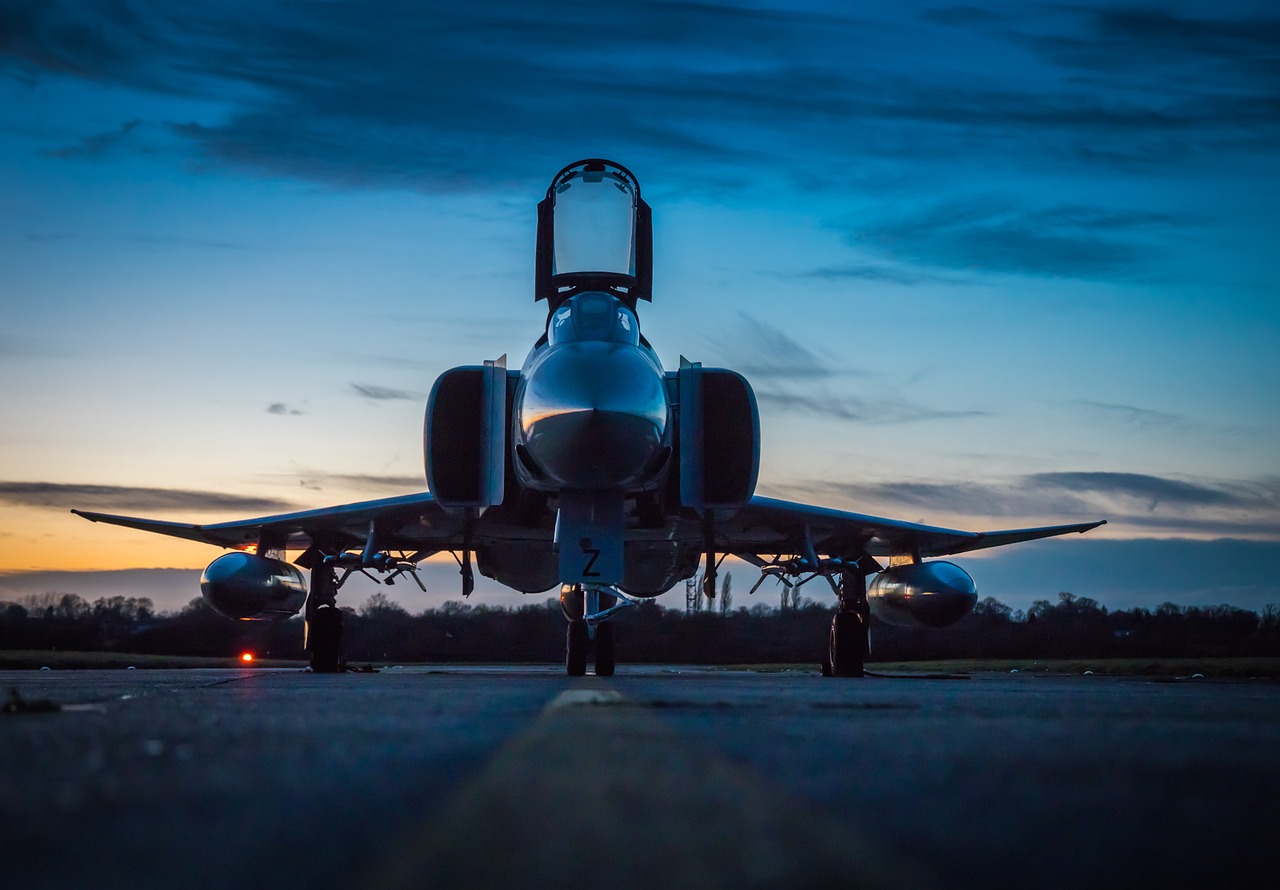
Enhancing Interoperability Among Forces
In today's complex battlefield, where military operations often involve multiple allied nations, the need for interoperability among forces has never been more critical. This is where artificial intelligence (AI) steps in as a game-changer. By facilitating seamless communication and collaboration, AI ensures that all parties involved can operate as a cohesive unit, even when they come from different backgrounds and possess varying levels of technological expertise. Imagine a symphony orchestra, where each musician plays a different instrument yet creates beautiful music together. That's the kind of synergy AI aims to foster among military forces.
One of the key ways AI enhances interoperability is through the standardization of communication protocols. This means that regardless of the country or the technology used, military units can share information swiftly and accurately. For instance, during joint operations, AI can translate and relay messages in real-time, eliminating the potential for misunderstandings that could lead to catastrophic consequences. Picture a scenario where a ground unit needs immediate air support; with AI-enabled systems, they can instantly communicate their needs to allied air forces, ensuring a rapid response that could save lives.
Furthermore, AI's ability to aggregate and analyze data from various sources allows military leaders to have a comprehensive view of the battlefield. This holistic understanding is crucial for coordinated efforts. Imagine a chess game where each player has a clear view of the entire board, allowing them to make calculated moves. AI provides that strategic advantage, ensuring that all forces are on the same page and can respond to evolving situations effectively.
However, while the benefits of AI in enhancing interoperability are substantial, it is essential to address the potential challenges. Different nations may have varying levels of trust in AI technologies, which can create friction in collaborative efforts. Additionally, data security becomes paramount as sensitive information is shared across borders. To mitigate these concerns, establishing robust frameworks for data sharing and communication is vital.
To sum up, AI is not merely a tool; it is a transformative force that enhances interoperability among military forces. By standardizing communication, providing real-time data analysis, and fostering trust through secure systems, AI allows allied forces to operate seamlessly, ensuring that they can respond to threats effectively and efficiently. The future of military operations lies in this collaborative approach, where technology bridges gaps and unites forces in the pursuit of common objectives.
- What is interoperability in military terms?
Interoperability refers to the ability of military forces from different nations to communicate, operate, and work together effectively during joint missions. - How does AI improve communication among allied forces?
AI improves communication by standardizing protocols, enabling real-time translation, and providing comprehensive data analysis to ensure all parties are informed and coordinated. - What are the challenges of using AI in military interoperability?
Challenges include varying levels of trust in AI technologies among nations, data security concerns, and the need for standardized communication frameworks. - Why is AI considered a game-changer in military operations?
AI enhances efficiency, situational awareness, and decision-making, allowing military forces to respond to threats more effectively and collaborate seamlessly.
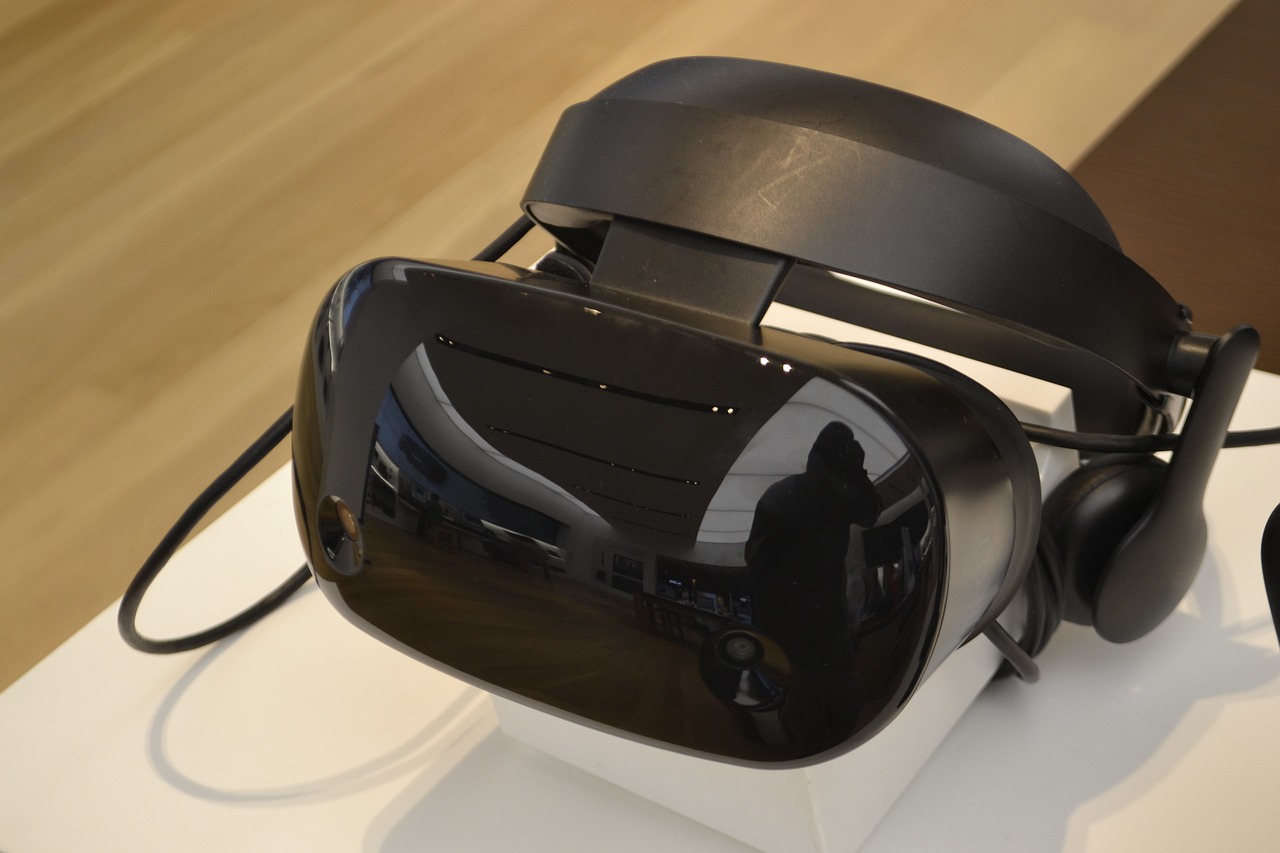
AI-Driven Training and Simulation
In the rapidly evolving landscape of military operations, systems are becoming indispensable tools for enhancing the preparedness of soldiers. These technologies are not merely about replacing traditional training methods; they are about transforming the way soldiers learn and adapt to the complexities of modern warfare. Imagine stepping into a training environment where every scenario is tailored to mimic real-life challenges, complete with dynamic variables that change based on your decisions. This is the power of AI in training.
One of the most exciting developments in this area is the integration of virtual reality (VR) with AI. By creating immersive training experiences, soldiers can engage in lifelike simulations that replicate the stress and unpredictability of actual combat situations. For instance, a soldier might find themselves in a VR environment where they must communicate effectively with their team while navigating through a simulated urban battlefield. This not only hones their communication skills but also builds team cohesion under pressure. The realism of these simulations can significantly enhance a soldier's ability to react swiftly and effectively in real-life scenarios.
Moreover, AI-driven training systems are equipped with continuous learning capabilities. These systems analyze performance data in real-time, allowing for immediate feedback and adjustments to training programs. For example, if a soldier struggles with specific communication protocols during a simulation, the AI can identify this weakness and adapt future training sessions to focus on those areas. This personalized approach ensures that each soldier receives the most relevant and effective training tailored to their evolving needs.
It's also important to consider the scalability of these AI-driven training solutions. With the ability to train multiple soldiers simultaneously in a virtual environment, military organizations can significantly reduce training costs and time. Instead of gathering troops for lengthy sessions, they can engage in self-paced, on-demand training modules that fit into their schedules. This flexibility is crucial in maintaining operational readiness without compromising on the quality of training.
However, as with any technological advancement, there are challenges to address. The implementation of AI in training and simulation must be accompanied by a robust framework that ensures ethical usage and data privacy. Military organizations need to navigate these waters carefully to avoid potential pitfalls while reaping the benefits of AI.
In conclusion, AI-driven training and simulation are revolutionizing how military personnel prepare for the battlefield. By leveraging advanced technologies, soldiers can enhance their communication skills, improve teamwork, and adapt to the ever-changing dynamics of warfare. As we continue to explore this fascinating intersection of technology and military training, the future looks promising for both soldiers and the organizations that support them.
- How does AI improve military training?
AI enhances military training by providing personalized learning experiences, real-time feedback, and immersive simulations that replicate real-life scenarios. - What role does virtual reality play in AI-driven training?
Virtual reality allows soldiers to engage in lifelike simulations, improving their communication and decision-making skills under pressure. - Are there ethical concerns with AI in military training?
Yes, there are concerns regarding data privacy, accountability, and the potential for misuse, which need careful consideration and regulation.

Virtual Reality and AI Integration
Imagine stepping into a world where reality blurs with artificial intelligence, creating a training environment that feels almost *too real*. This is where Virtual Reality (VR) meets Artificial Intelligence (AI), and it's revolutionizing how soldiers prepare for the battlefield. By integrating these two advanced technologies, military training has reached unprecedented levels of effectiveness. VR provides immersive experiences that simulate real-world combat scenarios, while AI analyzes performance in real-time, offering personalized feedback and adjustments.
In traditional training environments, soldiers often practice in static scenarios that might not fully capture the chaos and unpredictability of actual combat. However, with AI-powered VR simulations, trainees can face dynamic challenges that change based on their decisions and actions. For instance, if a soldier makes a strategic error, the AI can instantly modify the scenario to reflect the consequences of that decision, providing a unique learning opportunity. This adaptability is crucial; it mirrors the fluid nature of warfare, where every second counts and decisions can mean the difference between success and failure.
Moreover, the integration of VR and AI allows for the creation of highly detailed and realistic environments. Soldiers can train in virtual cities, forests, or even urban combat zones, all designed with meticulous attention to detail. This realism not only enhances the training experience but also helps soldiers develop essential communication skills and teamwork under pressure. For example, they can practice coordinating with teammates in a simulated mission, learning how to relay information effectively and respond to commands in real-time.
One of the most exciting aspects of this integration is the potential for *continuous improvement*. AI algorithms can track a soldier's performance over time, identifying strengths and weaknesses. This data can then be used to tailor training programs, ensuring that each individual receives the most effective instruction based on their unique needs. Imagine a soldier who struggles with quick decision-making; the AI can create specific scenarios that focus on enhancing that skill, leading to a more prepared and capable military force.
As we look to the future, the possibilities seem endless. The combination of VR and AI not only enhances training but also has the potential to transform how military operations are conducted. Soldiers who train in these immersive environments are likely to be better equipped to handle the complexities of modern warfare. They can develop a deeper understanding of communication protocols, improve their situational awareness, and ultimately, increase their chances of success on the battlefield.
- What is the main benefit of integrating VR and AI in military training? The main benefit is the creation of realistic, adaptable training scenarios that enhance soldiers' decision-making and communication skills under pressure.
- How does AI improve training outcomes? AI analyzes individual performance and tailors training programs to address specific strengths and weaknesses, ensuring personalized learning experiences.
- Can VR training replace traditional military training methods? While VR training offers significant advantages, it is most effective when used in conjunction with traditional methods, providing a comprehensive training approach.
- What are the future implications of VR and AI in military operations? The integration of these technologies could lead to improved operational efficiency, enhanced teamwork, and better preparedness for complex combat scenarios.
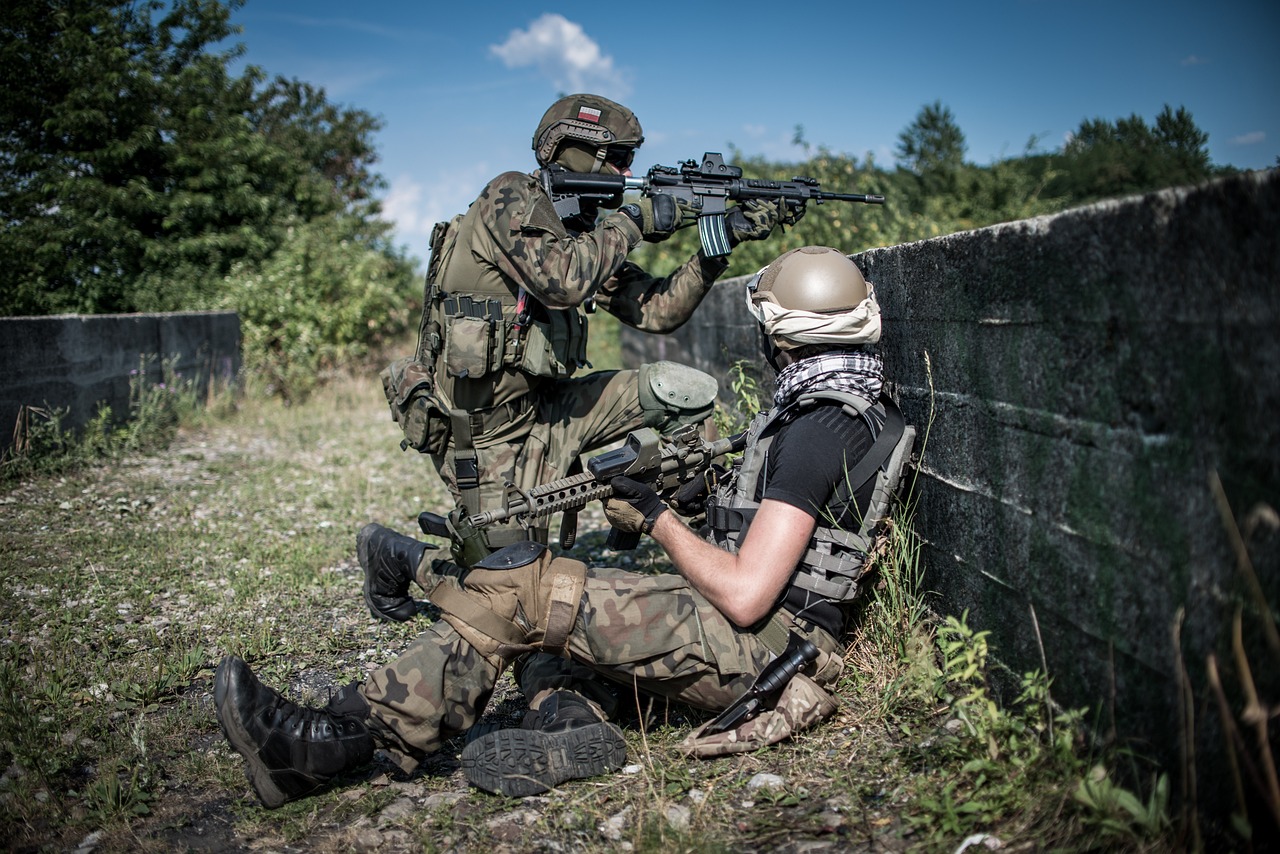
Continuous Learning Systems
In the rapidly evolving landscape of military operations, powered by artificial intelligence are becoming essential for enhancing communication and decision-making skills among soldiers. These systems are designed to analyze training outcomes in real-time, allowing them to adapt and improve based on the specific needs and challenges faced by military personnel. Imagine a coach who watches every play of a game, instantly providing feedback to players on what they did right or wrong. This is precisely what continuous learning systems do for soldiers during their training sessions.
One of the most significant advantages of these systems is their ability to create a tailored training experience. By assessing individual performance, AI can identify areas where a soldier excels and where they may need additional support. For example, if a soldier struggles with communication under pressure, the system will adjust their training regimen to focus specifically on that skill. This personalized approach not only enhances the effectiveness of training but also boosts the confidence of the soldiers, ensuring they are better prepared for real-world scenarios.
Moreover, continuous learning systems utilize data from various sources, including simulations, live exercises, and even battlefield experiences, to refine their algorithms. This means that as more data is collected, the systems become increasingly adept at predicting the training needs of personnel. It's akin to a plant that grows stronger and more resilient with the right nutrients—these systems thrive on data, and the more they have, the better they can support military readiness.
To illustrate how these systems work, consider the following table that outlines the key components of continuous learning systems in military training:
| Component | Description |
|---|---|
| Data Collection | Gathering performance metrics from various training exercises. |
| Performance Analysis | Using AI algorithms to assess strengths and weaknesses. |
| Adaptive Learning | Modifying training programs based on analysis outcomes. |
| Feedback Mechanism | Providing real-time feedback to enhance learning. |
| Progress Tracking | Monitoring improvements over time for continuous development. |
As we delve deeper into the implications of continuous learning systems, we must also consider the broader impact on military effectiveness. The ability to adapt training in real-time not only prepares soldiers for immediate challenges but also fosters a culture of lifelong learning. This is crucial in a world where warfare is becoming increasingly complex and unpredictable. Soldiers who are trained to learn continuously are better equipped to handle the unexpected, making them invaluable assets on the battlefield.
In summary, continuous learning systems represent a significant leap forward in military training methodologies. By harnessing the power of AI, these systems ensure that soldiers are not just trained but are continuously evolving, adapting, and preparing for the challenges that lie ahead. As we embrace these innovations, we pave the way for a more effective and responsive military force, ready to tackle the complexities of modern warfare.
- What are continuous learning systems?
Continuous learning systems are AI-powered platforms that adapt training programs based on individual performance, ensuring that military personnel receive tailored training experiences. - How does AI improve military training?
AI enhances military training by analyzing vast amounts of data to identify strengths and weaknesses, allowing for real-time adjustments to training regimens. - Why is personalized training important?
Personalized training addresses the unique challenges faced by each soldier, improving their skills and confidence, and ultimately enhancing overall operational effectiveness. - Can continuous learning systems predict training needs?
Yes, these systems utilize data from various sources to predict and adapt to the training needs of military personnel, ensuring they are always prepared for real-world scenarios.

Challenges and Ethical Considerations
The integration of artificial intelligence (AI) into battlefield communication has undeniably transformed military operations, but it also brings a host of challenges and ethical considerations that cannot be overlooked. As we embrace these advanced technologies, we must ask ourselves: what are the potential risks, and how do we navigate them responsibly?
One of the most pressing challenges is data privacy. Military communications often involve sensitive information that, if compromised, could lead to dire consequences. The use of AI systems to analyze and store this data raises concerns about who has access to it and how it is protected. Imagine a scenario where a hacker breaches a military communication system; the ramifications could be catastrophic, potentially exposing troop movements and strategies to adversaries.
Another significant issue is accountability. When decisions are made by AI algorithms, determining who is responsible for those decisions becomes murky. For instance, if an AI system misinterprets data and leads to an erroneous strike, who bears the blame? The programmer, the military commander, or the AI itself? This lack of clarity can create a dangerous environment where accountability is diffused, and the consequences of mistakes are amplified.
Moreover, the potential for misuse of AI technologies adds another layer of complexity. The very capabilities that enhance battlefield communication could also be weaponized. For example, AI could be used to manipulate information or conduct psychological operations against enemy forces. This raises ethical questions about the extent to which AI should be employed in warfare and the moral implications of using such advanced technologies to gain an upper hand.
To address these challenges, it is crucial for military organizations to establish robust regulations and ethical guidelines governing the use of AI in communication. This includes:
- Implementing strict data protection measures to safeguard sensitive information.
- Creating clear accountability frameworks that define responsibility in AI decision-making.
- Developing ethical standards that outline acceptable uses of AI in military operations.
In conclusion, while AI has the potential to revolutionize battlefield communication, it is imperative to approach its implementation with caution. By acknowledging and addressing the challenges and ethical considerations, military organizations can harness the power of AI responsibly, ensuring that it serves to enhance, rather than undermine, the integrity of military operations.
- What are the main ethical concerns regarding AI in military communication?
The primary concerns include data privacy, accountability for decisions made by AI, and the potential for misuse of AI technologies. - How can military organizations ensure data privacy when using AI?
By implementing stringent data protection measures and access controls to safeguard sensitive information. - Who is held accountable for AI-driven decisions in military operations?
Accountability can be complex, often involving multiple parties such as programmers, commanders, and the organizations that deploy the AI systems. - What regulations are needed for the ethical use of AI in warfare?
Robust regulations should include clear guidelines on data protection, accountability, and ethical standards for AI applications in military contexts.
Frequently Asked Questions
- How is AI transforming battlefield communication?
AI is revolutionizing battlefield communication by enhancing real-time information sharing and streamlining command processes. This ensures that critical data reaches the right personnel swiftly and securely, allowing for better coordination and decision-making during military operations.
- What role does data analysis play in military operations?
Data analysis powered by AI enables military leaders to quickly process vast amounts of information. This capability enhances situational awareness and improves operational planning, allowing for more informed strategic decisions in complex environments.
- Can AI predict potential threats in warfare?
Yes, AI utilizes predictive analytics to forecast potential threats and outcomes. This foresight is crucial for military strategists, helping them prepare for various scenarios and maintain an advantage over adversaries in dynamic combat situations.
- How does AI improve operational efficiency in military settings?
AI contributes to operational efficiency by automating routine tasks and optimizing resource allocation. This enables military personnel to focus on critical decision-making and mission execution, ultimately enhancing overall effectiveness on the battlefield.
- What is the significance of interoperability among allied forces?
Interoperability among allied forces is vital for coordinated operations in multinational military engagements. AI facilitates better communication protocols, ensuring seamless information exchange and collaboration among different military units.
- How are AI and virtual reality used in military training?
The integration of AI with virtual reality provides immersive training experiences for soldiers. These lifelike simulations help improve communication strategies and teamwork in high-stress situations, ultimately enhancing battlefield preparedness.
- What are continuous learning systems in military training?
AI-driven continuous learning systems analyze training outcomes and adapt programs accordingly. This ensures that military personnel receive the most effective communication training tailored to their evolving needs and challenges.
- What challenges and ethical considerations arise from using AI in battlefield communication?
While AI offers numerous benefits, it also raises challenges and ethical concerns, such as data privacy, accountability, and the potential for misuse. These issues necessitate careful consideration and regulation to ensure responsible use of AI technologies in military contexts.

